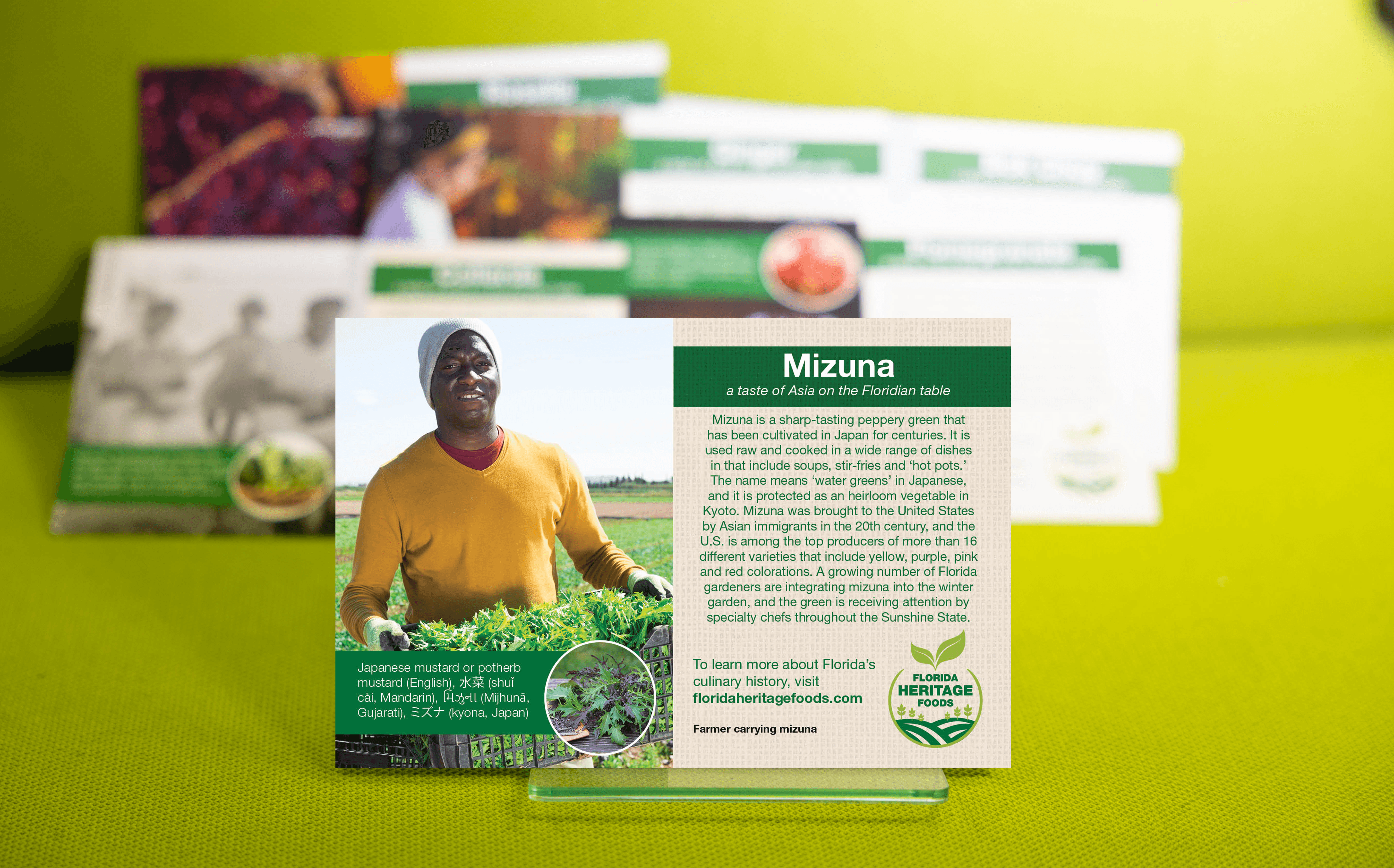Mizuna
Brassica juncea

Japanese mustard or potherb mustard (English), 水菜 (shuǐ cài, Mandarin), મિઝુના (Mijhunā, Gujarati), ミズナ (kyona, Japan)
Mizuna is a sharp-tasting peppery green that has been cultivated in Japan for centuries. It is used raw and cooked in a wide range of dishes in Japanese cuisine that includes soups, stir-fries and ‘hot pots.’ The name means ‘water greens’ in Japanese, and it is protected as an heirloom vegetable in Kyoto. Mizuna was brought to the United States by Asian immigrants in the 20th century, and the U.S. is among the top producers of more than 16 different varieties that include yellow, purple, pink and red colorations. A growing number of Florida gardeners are integrating mizuna into the winter garden, and the green is receiving attention by specialty chefs throughout the Sunshine State.

Mizuna is native to Japan, and the name means “water greens” because it was first cultivated in spring-fed fields in Kyoto. It was designed as a protected heirloom crop in 1989 after concerns over the impacts of Westernization on the traditional Japanese diet. Mizuna, along with 36 other heirloom vegetables grown in the Kyoto prefecture prior to 1868, was branded ‘Kyoyasai’ and it is grown under strict environmental standards. Asian immigration in the 20th century introduced Mizuna to nearly every continent. Mizuna is produced in more than 30 countries around the world, yet the United States is the largest producer outside of Asia. Mizuna began receiving attention when the popularity of nutrient-dense bitter greens, such as arugula, increased throughout the United States. In 2019 Mizuna was successfully grown in the International Space Station. In Florida today, home gardeners grow colorful varieties of Mizuna winter gardens throughout the state.
Mizuna has been a staple in Japanese cuisine for centuries, and it is commonly added to stews and soups referred to as “nabemono” or stir-fried and then served alongside rice. In the United States, Mizuna is most often used raw in salads and microgreen garnishes, yet it is also sauteed and added to soups and stir-fries.

Mizuna is rich in fiber and vitamins A, C, K, and E; and minerals such as calcium, folate, iron, and potassium.


Plant Mizuna February through April and then again September through November. The leaves can be harvested November through May. Plant by directly sowing seed or with transplants.
To plan a heritage garden, download the ‘Planning a Florida Heritage Garden (PDF).’

Santa Fe College Partnered with Multiple Organizations in a Collaborative Effort to Bring Awareness of the Heritage Plants In Florida.
BY CULTURAL HISTORY
BY GROWING SEASON
DROUGHT TOLERANT PLANTS
Commitment to Equal Access and Equal Opportunity
Santa Fe College is committed to an environment that embraces diversity, respects the rights of all individuals, is open and accessible, and is free of harassment and discrimination. For more information, visit sfcollege.edu/eaeo or contact equity.officer@sfcollege.edu.
SACSCOC Accreditation Statement
Santa Fe College is accredited by the Southern Association of Colleges and Schools Commission on Colleges (SACSCOC). For more information, visit sfcollege.edu/sacscoc.
